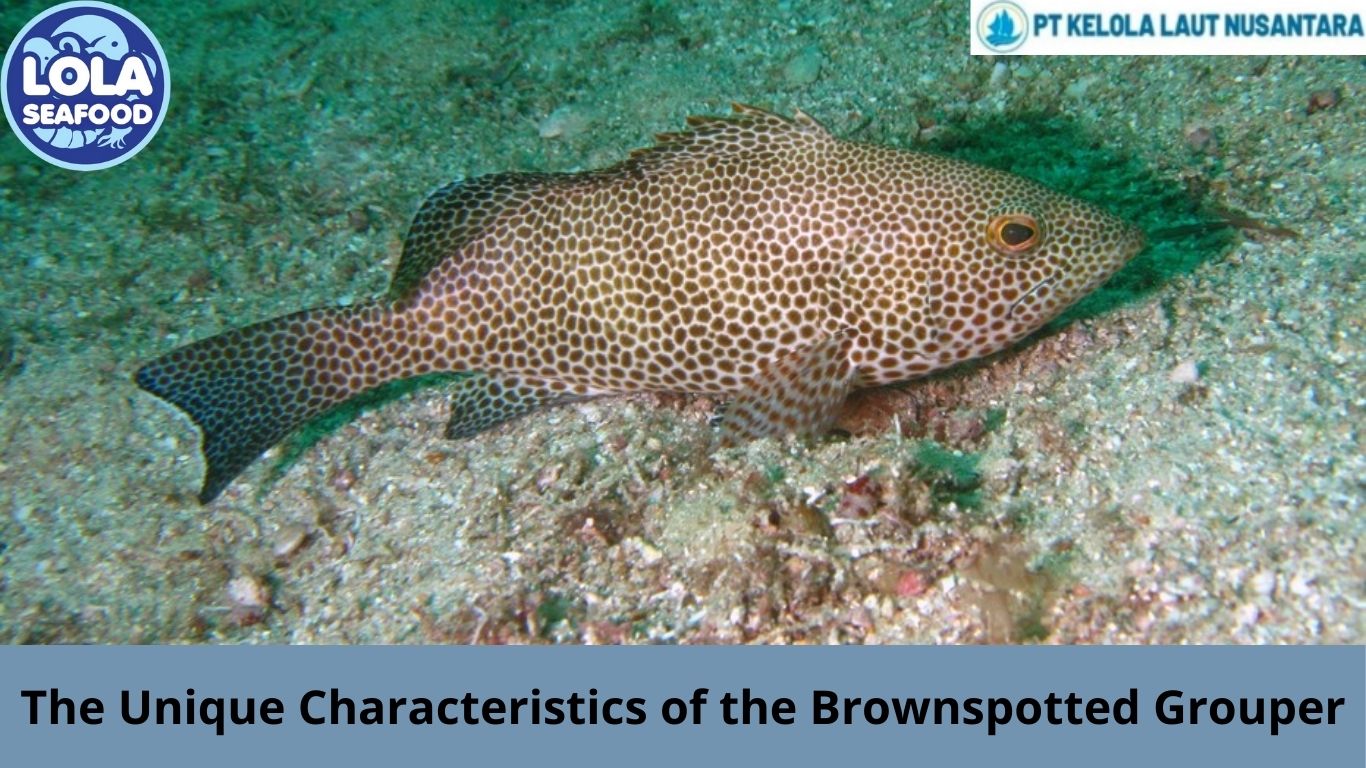The Unique Characteristics of the Brownspotted Grouper
By. Fajar - 21 Feb 2025
Kelolalaut.com The Brownspotted Grouper (Epinephelus chlorostigma) is a fascinating species of fish that inhabits coral reefs and rocky seabeds in tropical and subtropical waters. This species, commonly found in the Indo-Pacific region, is well-known for its distinct coloration, adaptive behaviours, and ecological significance. One of its most special characteristics is its ability to change colour, which plays a crucial role in communication, camouflage, and predator avoidance.
Coloration and Camouflage
The Brownspotted Grouper gets its name from the brown spots that cover its body, which help it blend seamlessly with its surroundings. These spots vary in size and distribution, creating a pattern that mimics the reef structures where it resides. This natural camouflage allows the fish to remain hidden from both predators and prey. Additionally, this species has the ability to alter its colour slightly, depending on its environment and mood, an adaptation that enhances its survival in the wild.
Feeding Behaviour and Hunting Strategy
Another remarkable trait of the Brownspotted Grouper is its hunting technique. It is an ambush predator, meaning it relies on patience and stealth to catch its prey. The fish remains motionless near rocky crevices or coral outcrops, waiting for unsuspecting smaller fish or crustaceans to swim by. When the opportunity arises, the grouper strikes with impressive speed, using its powerful jaws to create a suction force that pulls prey directly into its mouth. This method of predation is highly effective and ensures a successful catch with minimal energy expenditure.
Adaptability and Habitat Preference
The Brownspotted Grouper is known for its ability to thrive in various marine environments. Although it prefers coral reefs, it can also be found in seagrass beds, estuaries, and even artificial structures like shipwrecks. This adaptability allows the species to colonize new areas and sustain its population despite environmental changes. Additionally, it can tolerate a range of salinity levels, making it one of the more resilient members of the grouper family.
Role in the Ecosystem
As a top predator in its habitat, the Brownspotted Grouper plays a vital role in maintaining the balance of the marine ecosystem. By controlling populations of smaller fish and invertebrates, it helps prevent overpopulation and ensures a healthy food web. Furthermore, its presence indicates a thriving reef system, as groupers are generally sensitive to habitat degradation and pollution.
Conservation Status and Human Interaction
Despite its adaptability, the Brownspotted Grouper faces threats from overfishing and habitat destruction. Due to its large size and desirable flesh, it is frequently targeted by commercial and recreational fisheries. Unsustainable fishing practices, such as the use of destructive fishing gear, have led to population declines in some regions. Conservation efforts, including marine protected areas and sustainable fishing regulations, are crucial in preserving this species for future generations.
The Brownspotted Grouper is a remarkable fish with unique adaptations that allow it to survive in diverse environments. Its camouflage abilities, ambush hunting tactics, and ecological significance make it a key species in marine ecosystems. However, human activities continue to pose a threat to its population, highlighting the need for conservation efforts to ensure its long-term survival. Understanding and protecting this species will help maintain the health and biodiversity of coral reef ecosystems worldwide.
If youre interested in our Grouper Fillet Skinless, Grouper Black Dotted Whole Round, and Grouper Fillet Portion Cut please do not hesitate to contact us through email and/or whatsapp
.jpg)
The Impact of HACCP-Based Integrated Quality Management Programs on the Quality and Competitiveness of Fresh Demersal Fish Products
 and Employee Productivity on the Demersal Fish Processing Floor.jpg)


.jpg)



